Crafting a Culture of Care
Crafting a Culture of Care
Rachel Garceau inside her installation methods of embrace (2020), which includes slipcast porcelain pieces on the walls and handmade porcelain pebbles on the floor. Visitors slowed down and became more aware when inside this installation. Photo by Emily Kehnast.
This year has presented us with multiple compounding crises, and the work of recovery is just beginning. Those who make craft, honor it, and live with it can help show us the way forward—because a life in craft is imbued with care. Here, craftspeople offer their insights about craft and care, providing a guide for how we can help heal ourselves, tend to one another, and create a culture of care.
Embodying Attentiveness and Presence
Like all artists, craftspeople take care in making. Atlantan Rachel Garceau, who creates assemblages and installations using porcelain, says “the material demands that it be handled in a particular way.... You have to be full of care when you’re handling porcelain, throughout the whole process.”
For her installation methods of embrace (2020), she surrounded the interior space of an 8 x 10 ft. shed with porcelain pieces. “The way visitors would slow down and move their bodies in the room—I would use the word care for that. It was like a special type of care and consideration. Then they would walk out in a different way—I feel like their pace slowed. They seemed to be just a little more aware.”
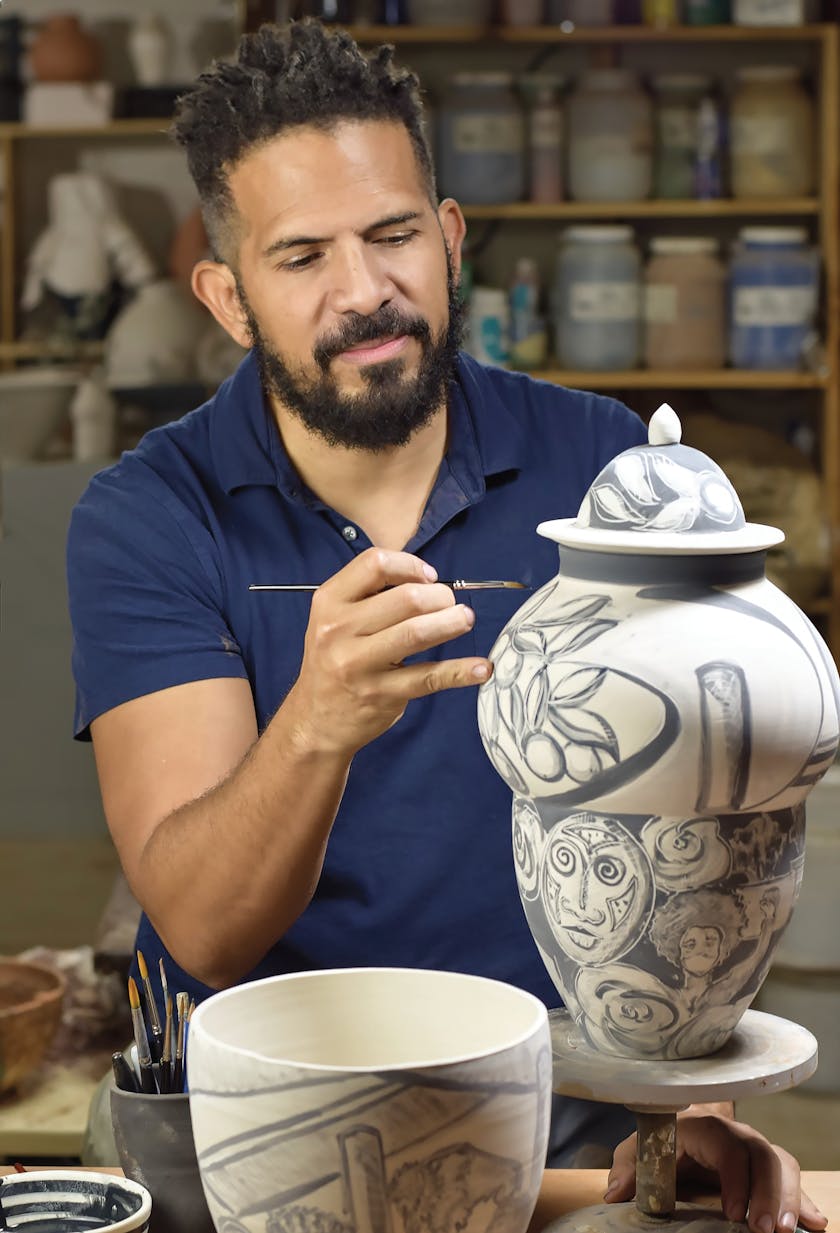
Ceramist Wayne Perry, working here on 2020 Urn, notes that it takes time and care to ensure a piece is well made and that it has value and meaning. Photo by Mia Perry.
Los Angeles-based ceramic artist Wayne Perry sees care in the exquisite attention artists pay to their work. “There’s an intangible called quality, and for me quality comes from really developing your ability, and then taking the time and the care to make sure that the piece is well made and has value and meaning to it.”
What both artists are talking about is a profound sense of presence. This level of awareness is essential for bringing more care to ourselves and others.
Offering Connection
Unlike mass-produced items, handcrafted pieces link one human being with another. “When you look at a piece of art or craft work,” says Vashti DuBois, founder and curator of The Colored Girls Museum in Philadelphia, “you know that, wow, somebody intended for it to look like this and feel like this and smell like this. There’s something almost spiritual about being able to acknowledge someone else’s care for a thing and how that care can transfer to your experience as a viewer.”

Glass artist Ben Wright, photographed inside his installation Vivisection (2018). Photo by Yuzu Zheng.
Ben Wright, a glass artist and the artistic director of the Pilchuck Glass School in Stanwood, Washington, sums it up this way: “Craft objects radiate the maker’s care back to you.”
A work of craft can also be a physical comfort. Jennifer Ling Datchuk, based in San Antonio, uses ceramics in innovative ways in sculptural works. Under pandemic conditions, she says, the functional ceramics she owns have brought her comfort: “Some of my pandemic purchases have been ceramic cups from artists I really love and admire. When I have coffee in the morning, I feel like I’m having coffee with a friend. I feel like the touch of their hand is in the work.”
Where are there opportunities in everyday life to feel more connected to each other?
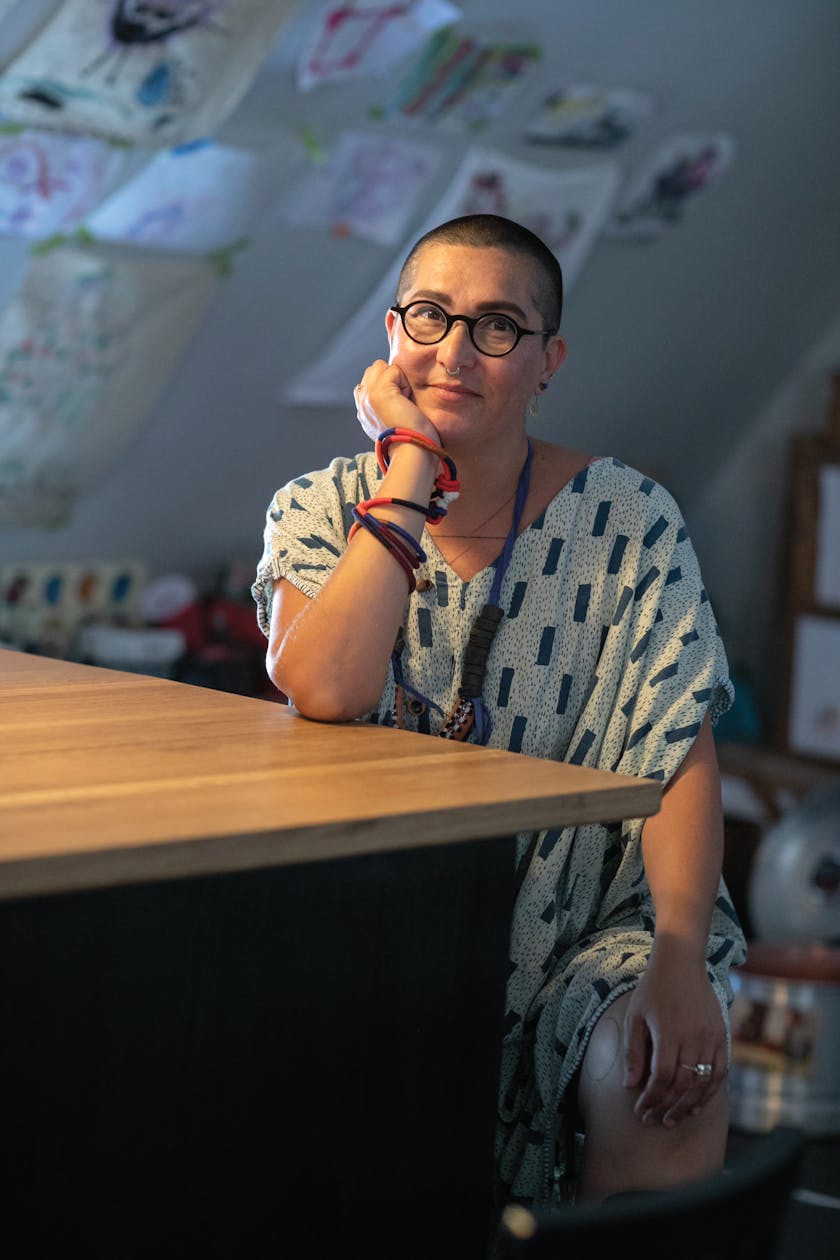
Artist, designer, and activist Tanya Aguiñiga says craft sets us up to be receptive to taking care of others. Photo by Katie Levine.
Tending to Each Other’s Welfare
“Craft usually has some connection to tradition, and often to family. It’s a very human-centric way of relating to the world, and I think this sets us up to be people who are receptive to taking care of others and engaging with community,” says Tanya Aguiñiga, a multidisciplinary artist in Los Angeles who works in fiber and other materials. “We’re open to sharing resources and to helping one another.”
She notes that the majority of people who work in craft are taught by a community how to do it. And from working in glass to tending kilns, there’s a great deal that the artist can’t do without the help of others. “In fiber,” she says, “even threading a loom is difficult to do on your own. You need somebody else at the other end to give you tension.” Glass artists share a nonverbal language of signals that helps keep everybody safe. Because they literally play with fire, they must attend to each other’s welfare, Aguiñiga points out. Similarly, to create a culture of care, it’s essential to tend to one another in order to forge bonds of trust.
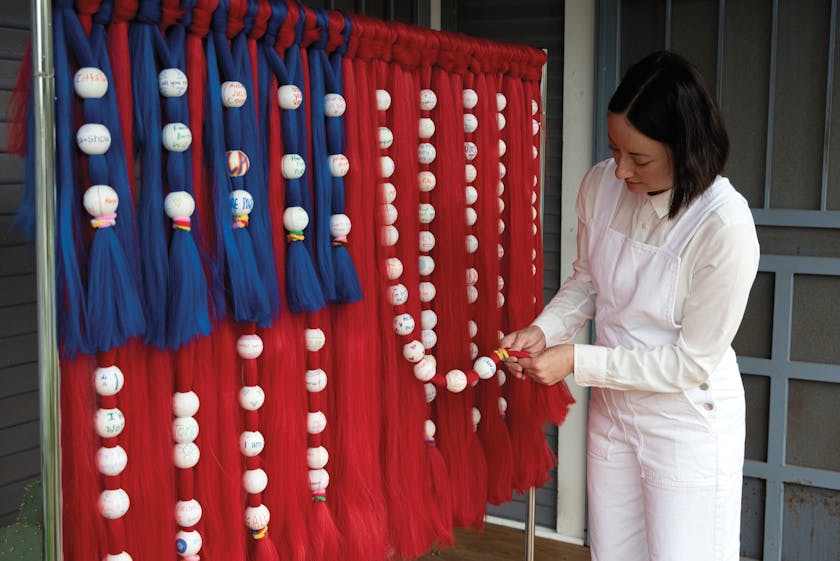
Jennifer Ling Datchuk with her piece in the 100 Years, 100 Women exhibition and archive (2020). Photo by Clint Datchuk.
“Some of my pandemic purchases have been ceramic cups from artists I really love and admire. When I have coffee in the morning, I feel like I’m having coffee with a friend.”
—Jennifer Ling Datchuk
Widening the Circles of Care
Craft’s collaborative spirit can inspire widening the circumferences of circles of care as well. Ben Wright reminds us to honor the shop technician, who “cares for the tools and other equipment we need to make the work, and is part of the invisible labor that goes into maintaining our studios.” The craft community has also found innovative ways to offer support and encouragement to others.
The NAMES Project AIDS Memorial Quilt is probably the best-known example of this kind of care. Since its inception in 1985, it’s grown into a 54-ton tapestry of more than 48,000 panels honoring the memories of people who died in a devastating earlier pandemic. The West Hollywood Stitch ’N Bitch knitting and crocheting club has created and donated hats, scarves, and blankets for people undergoing homelessness and health crises, and Millie’s Hats for Hope has served in a similar way in Detroit.
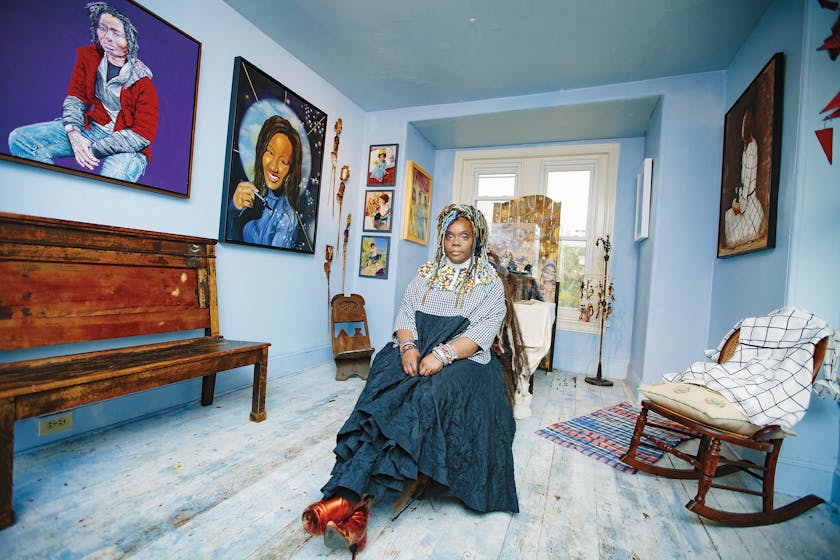
Vashti DuBois of The Colored Girls Museum, pictured in the exhibition First Time Ever I Saw Your Face (2020), says there’s something almost spiritual about acknowledging someone else’s care for a thing. Photo by Zamani Feelings.
Vashti DuBois and colleagues made the connections between craft, care, and community explicit when they transformed The Colored Girls Museum, which exhibits art and other objects that illuminate the lives of young African-American women, into a metaphorical hospital in the 2017 project called Urgent Care: A Social Care Experience. The aim was to illuminate the struggles of Black women and to lift up icons of hope and healing. “An important idea for us,” says DuBois, “was to put forward what the prescription might be for our own pain management, because when you’ve been denied acknowledgment of your pain, you can sometimes misread that pain.”
Each room in the museum was given a medical title—Diagnostic Imaging, the Triage Center, the Aftercare Suite, and so on—and a pair of artists were chosen to curate each room. “We wanted to put the ‘cure’ back in ‘curation,’” says DuBois.
Gallery art played an important role—but so did craft. “The artist-curators chose quilts, ceramic pieces, dolls,” says DuBois. “There was so much craft that they chose to call into the healing spaces with them, and I don’t think that was accidental.”
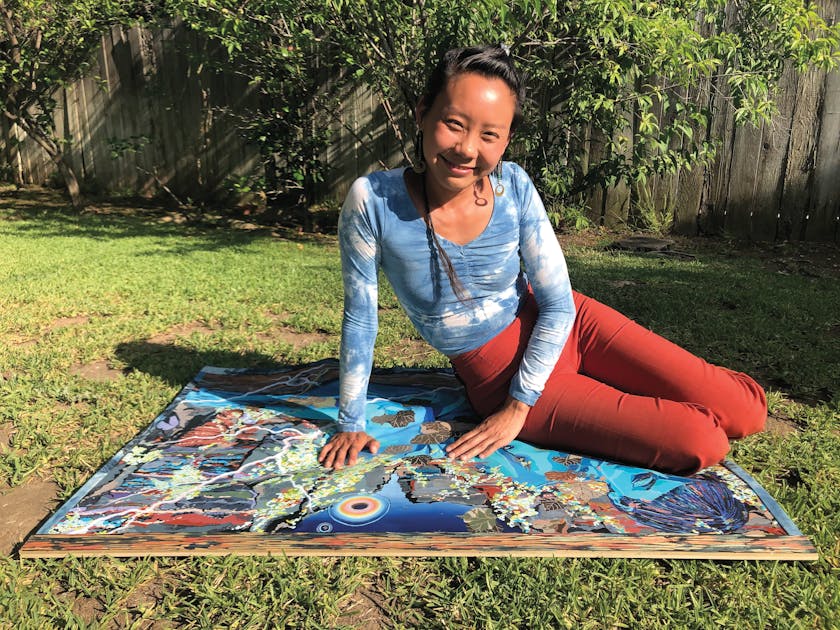
Painter Iris Yirei Hu saw the relationship between care and interdependence while studying with Zapotec weaver Porfirio Gutiérrez. Photo by David Lucas Bell.
Caring for Our Common Home
Craft, at its root, is deeply connected to the environment. As Ben Wright says, “You chose the tree you were going to make something out of because of the characteristics of that tree.” To have that information, he says, you needed rich knowledge of the local environment.
Pasadena, California-based painter Iris Yirei Hu had a big-city art-world education, including an MFA from Columbia University. But she discovered an intimate connection between Indigenous culture, family, and nature when she studied with Porfirio Gutiérrez, a Zapotec weaver in Oaxaca, Mexico. “His family has been doing natural dyes and weaving for generations,” she says, “and working with him I started to see the connections between land, climate, and community. How people play different roles in the production of a single carpet: who tends the sheep, who gets the yarn, who spins the yarn, dyes the yarn, starts the weaving, finishes the rug.
“Craft objects radiate the maker’s care back to you.”
—Ben Wright
“My understanding of care in this context was that everything was interdependent, and I was really moved by that interdependence. I started to think about our connections, to plants, to animals, to the Earth, to the soil, and to climate, and to how we treat materials and how we treat people,” says Hu, who continues to explore these questions through an apprenticeship with Melissa Cody, a fourth-generation Navajo weaver and artist, and by studying Indigenous Taiwanese Atayal weaving from Sayun Yuraw in Taipei’s Wulai Mountains.
Acknowledging interdependence—as well as practicing attentive presence, connecting with others, taking care of each other, and widening our circles of concern—can help us respond in a more caring way to a chaotic world. These practices, essential to craft, offer us ways to move through crisis, heal, and establish a new culture that prioritizes and embodies care. What could we fashion—form, mold, carve, sew together, hammer out—together, with care as a guiding principle?
Experience more stories like this in print
This piece is a taste of the inspiring and relevant content our members enjoy in American Craft magazine throughout the year. A subscription to our publication is just one of the benefits of joining the American Craft Council, and your support helps fund a range of programs that strengthen the craft community.

